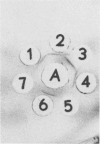Abstract
Antigen Vi of Salmonella typhi was found to have at least two antigenic determinants. In one of them, O-acetyl moiety played a dominant role. The second antigenic determinant did not involve O-acetyl residues, but both carboxyl and N-acetyl groups were necessary for the antigen-antibody reaction. These results were obtained by performing serological tests with antigen Vi, with its structural analog, polygalacturonic acid, and with the derivatives of both polysaccharides.
Full text
PDF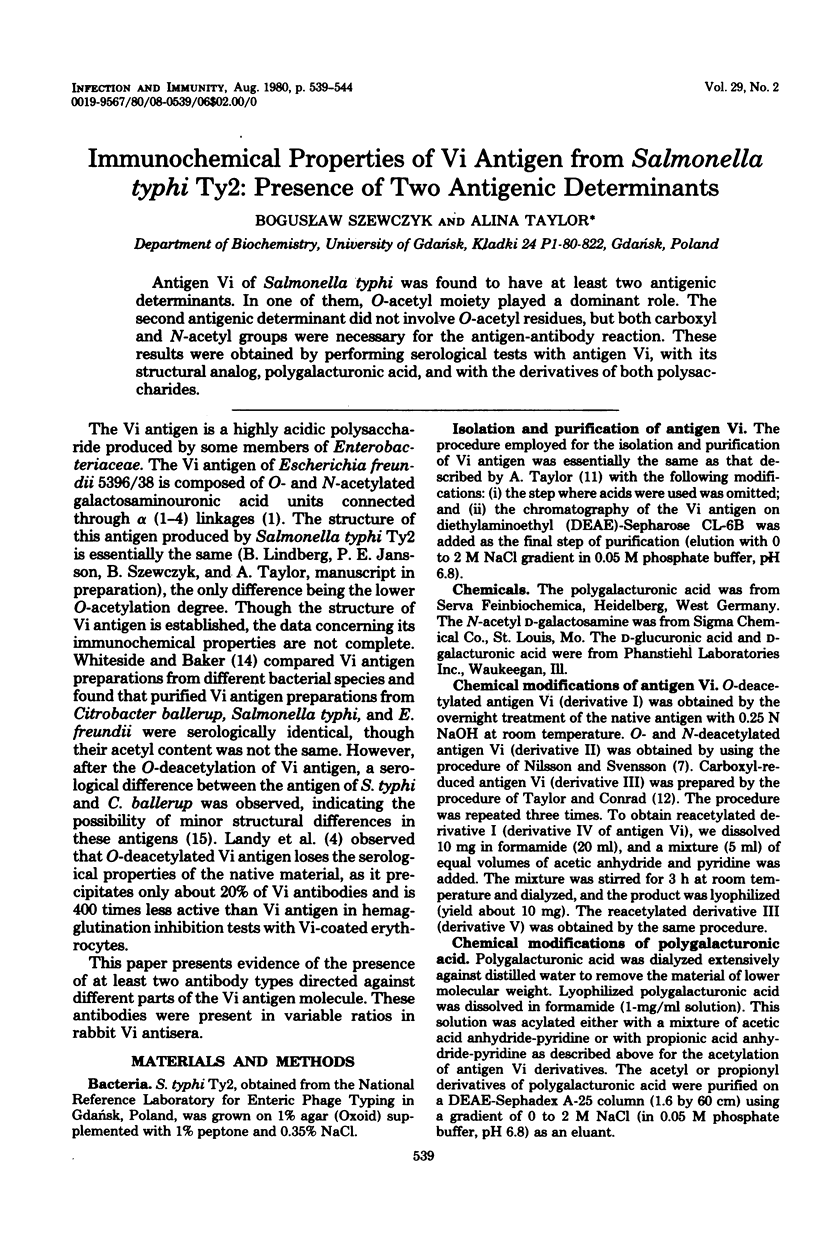
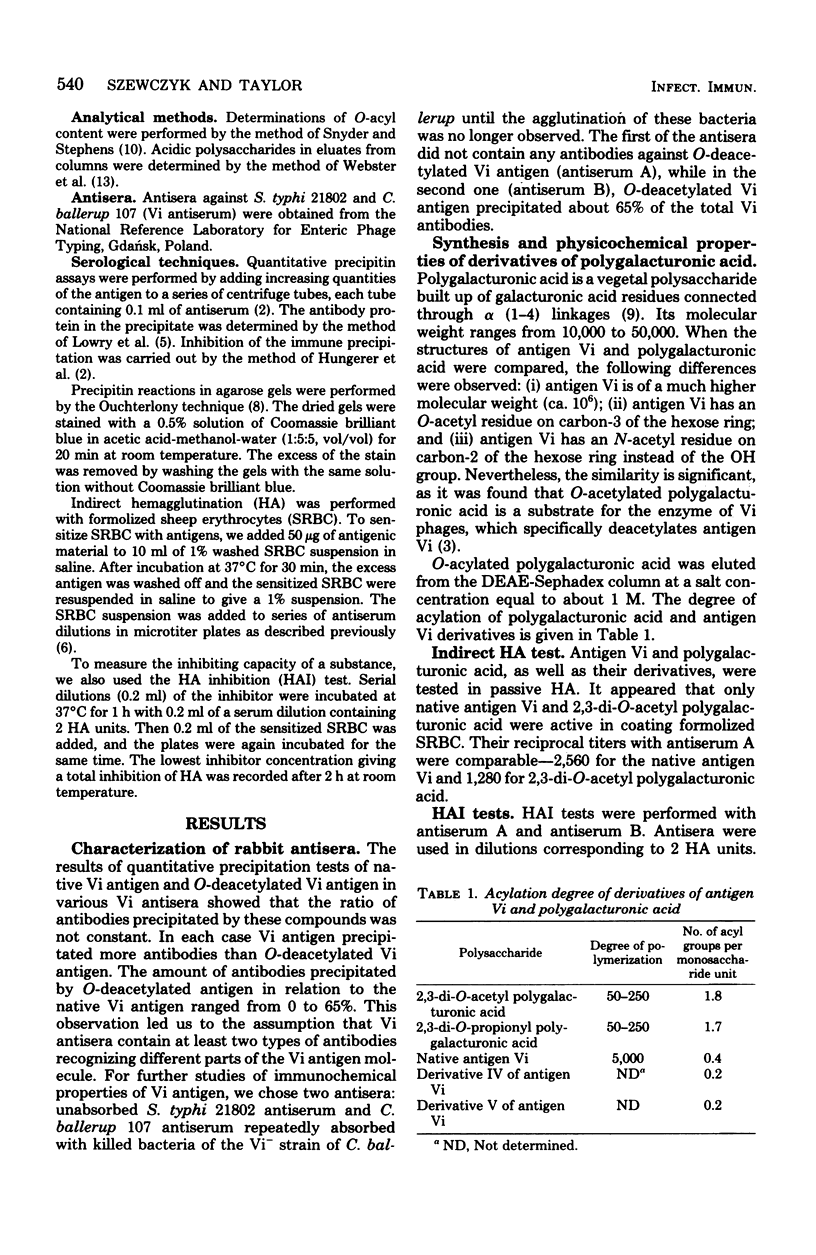

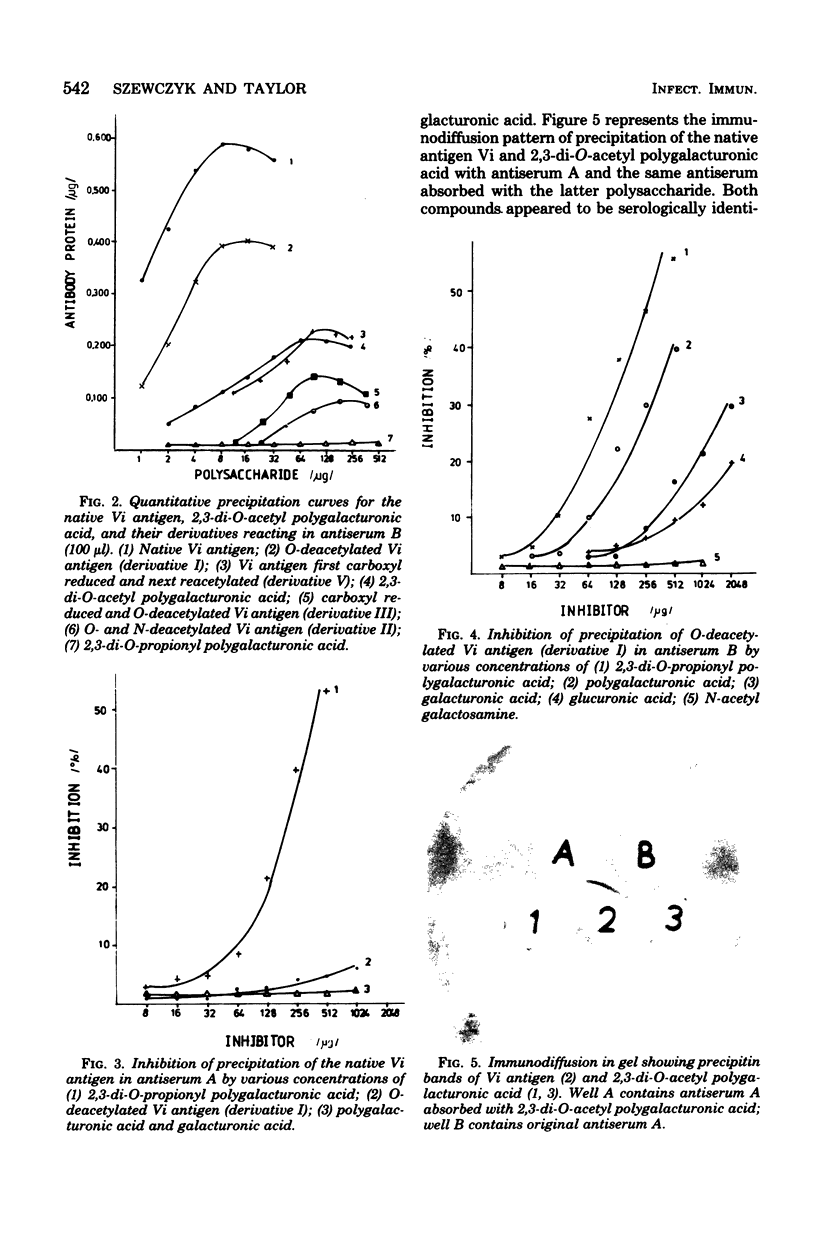

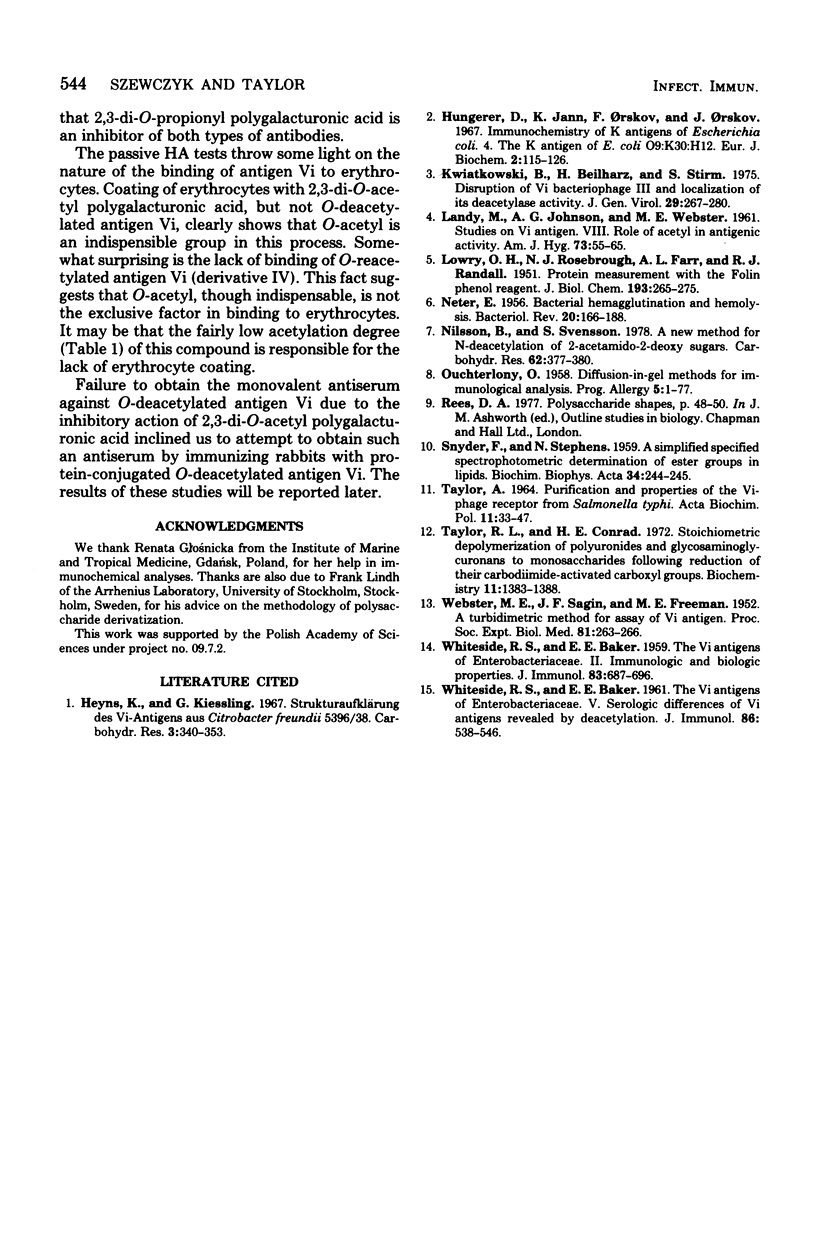
Images in this article
Selected References
These references are in PubMed. This may not be the complete list of references from this article.
- BAKER E. E., WHITESIDE R. E., BASCH R., DEROW M. A. The VI antigens of the Enterobacteriaceae. I. Purification and chemical properties. J Immunol. 1959 Dec;83:680–696. [PubMed] [Google Scholar]
- Hungerer D., Jann K., Jann B., Orskov F., Orskov I. Immunochemistry of K antigens of Escherichia coli. 4. The K antigen of E. coli O 9:K30:H12. Eur J Biochem. 1967 Jul;2(1):115–126. doi: 10.1111/j.1432-1033.1967.tb00115.x. [DOI] [PubMed] [Google Scholar]
- Kwiatkowski B., Beilharz H., Stirm S. Disruption of Vi bacteriophage III and localization of its deacetylase activity. J Gen Virol. 1975 Dec;29(3):267–280. doi: 10.1099/0022-1317-29-3-267. [DOI] [PubMed] [Google Scholar]
- LANDY M., JOHNSON A. G., WEBSTER M. E. Studies on Vi antigen. VIII. Role of acetyl in antigenic activity. Am J Hyg. 1961 Jan;73:55–65. [PubMed] [Google Scholar]
- LOWRY O. H., ROSEBROUGH N. J., FARR A. L., RANDALL R. J. Protein measurement with the Folin phenol reagent. J Biol Chem. 1951 Nov;193(1):265–275. [PubMed] [Google Scholar]
- NETER E. Bacterial hemagglutination and hemolysis. Bacteriol Rev. 1956 Sep;20(3):166–188. doi: 10.1128/br.20.3.166-188.1956. [DOI] [PMC free article] [PubMed] [Google Scholar]
- OUCHTERLONY O. Diffusion-in-gel methods for immunological analysis. Prog Allergy. 1958;5:1–78. [PubMed] [Google Scholar]
- SNYDER F., STEPHENS N. A simplified spectrophotometric determination of ester groups in lipids. Biochim Biophys Acta. 1959 Jul;34:244–245. doi: 10.1016/0006-3002(59)90255-0. [DOI] [PubMed] [Google Scholar]
- TAYLOR A. PURIFICATION AND PROPERTIES OF THE VI-PHAGE RECEPTOR FROM SALMONELLA TYPHI. Acta Biochim Pol. 1964;11:33–47. [PubMed] [Google Scholar]
- Taylor R. L., Conrad H. E. Stoichiometric depolymerization of polyuronides and glycosaminoglycuronans to monosaccharides following reduction of their carbodiimide-activated carboxyl groups. Biochemistry. 1972 Apr 11;11(8):1383–1388. doi: 10.1021/bi00758a009. [DOI] [PubMed] [Google Scholar]
- WEBSTER M. E., SAGIN J. F., FREEMAN M. E. A turbidimetric method for assay of Vi antigen. Proc Soc Exp Biol Med. 1952 Oct;81(1):263–266. doi: 10.3181/00379727-81-19842. [DOI] [PubMed] [Google Scholar]
- WHITESIDE R. E., BAKER E. E. The Vi antigens of the Enterobacteriaceae. V. Serologic differences of Vi antigens revealed by deacetylation. J Immunol. 1961 May;86:538–542. [PubMed] [Google Scholar]




